thin lenses
1/44
Earn XP
Description and Tags
outlines: lens forms / concave lens / convex lens / lens specification / focal length / formation of image / effectivity of lens /
Name | Mastery | Learn | Test | Matching | Spaced |
|---|
No study sessions yet.
45 Terms
what is a lens and how is it formed
an image forming device/ forms an image by refraction of light at its two surfaces
what is a lens usually made from
Usually glass, with one or both surfaces being curved / also other materials plastic, silica etc.
how can a lens be described
1- converging, diverging (based on its effect on light rays)
2- thick, thin (depending on if its thickness is negligible or not )
thin converging lens can also be referred to as….
a positive lens / convex lens
all thicker in the middle and thinner at the edge
lens forms: converging lenses (4)
1 - equi-convex
2 - double or bi-convex
3 - plano-convex
4 - convex meniscus
equi-convex
same radius of curvature on both surfaces
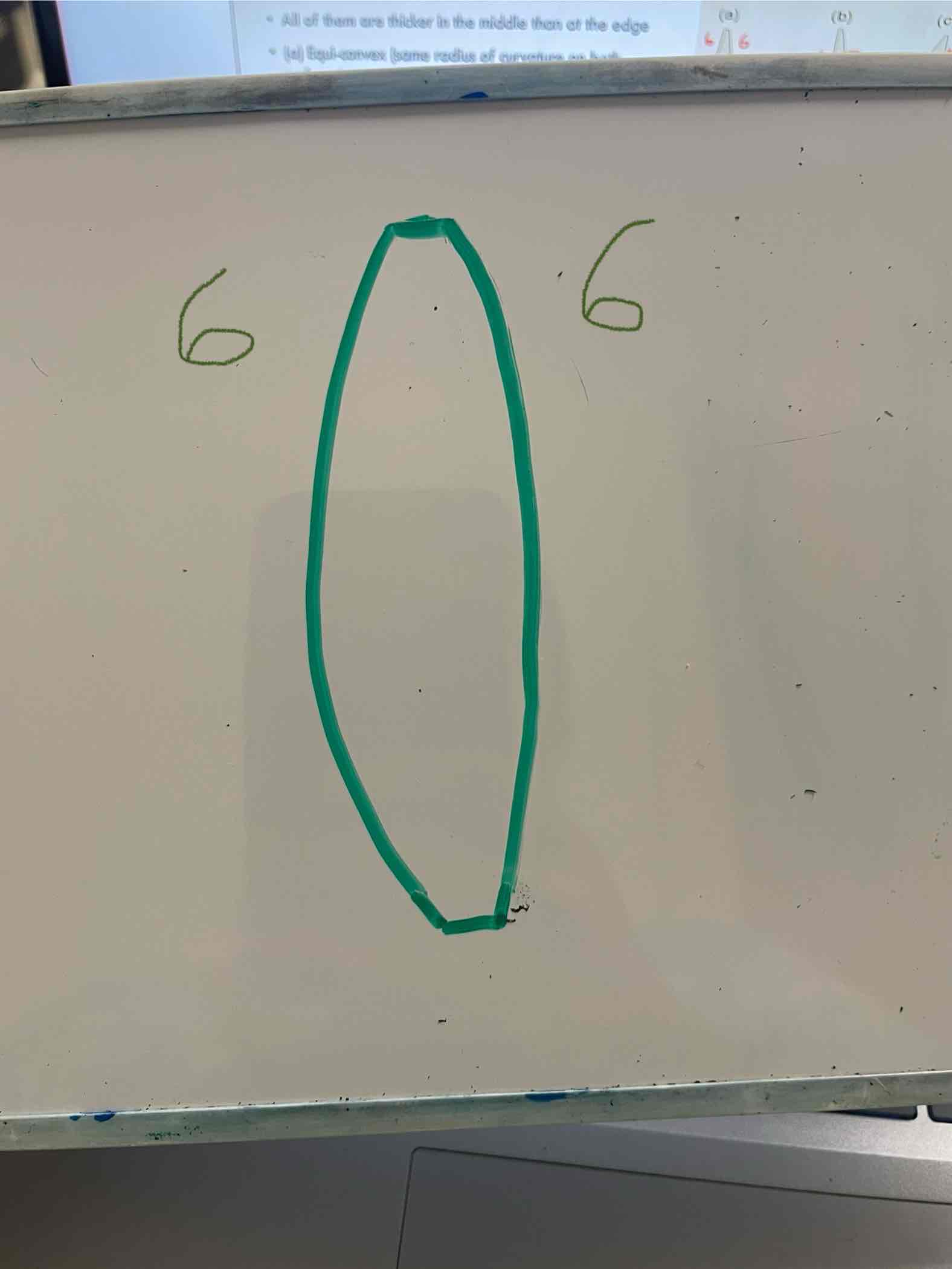
double or bi-convex
two different radius of curvature

plano-convex
one plane surface and one curved convex surface
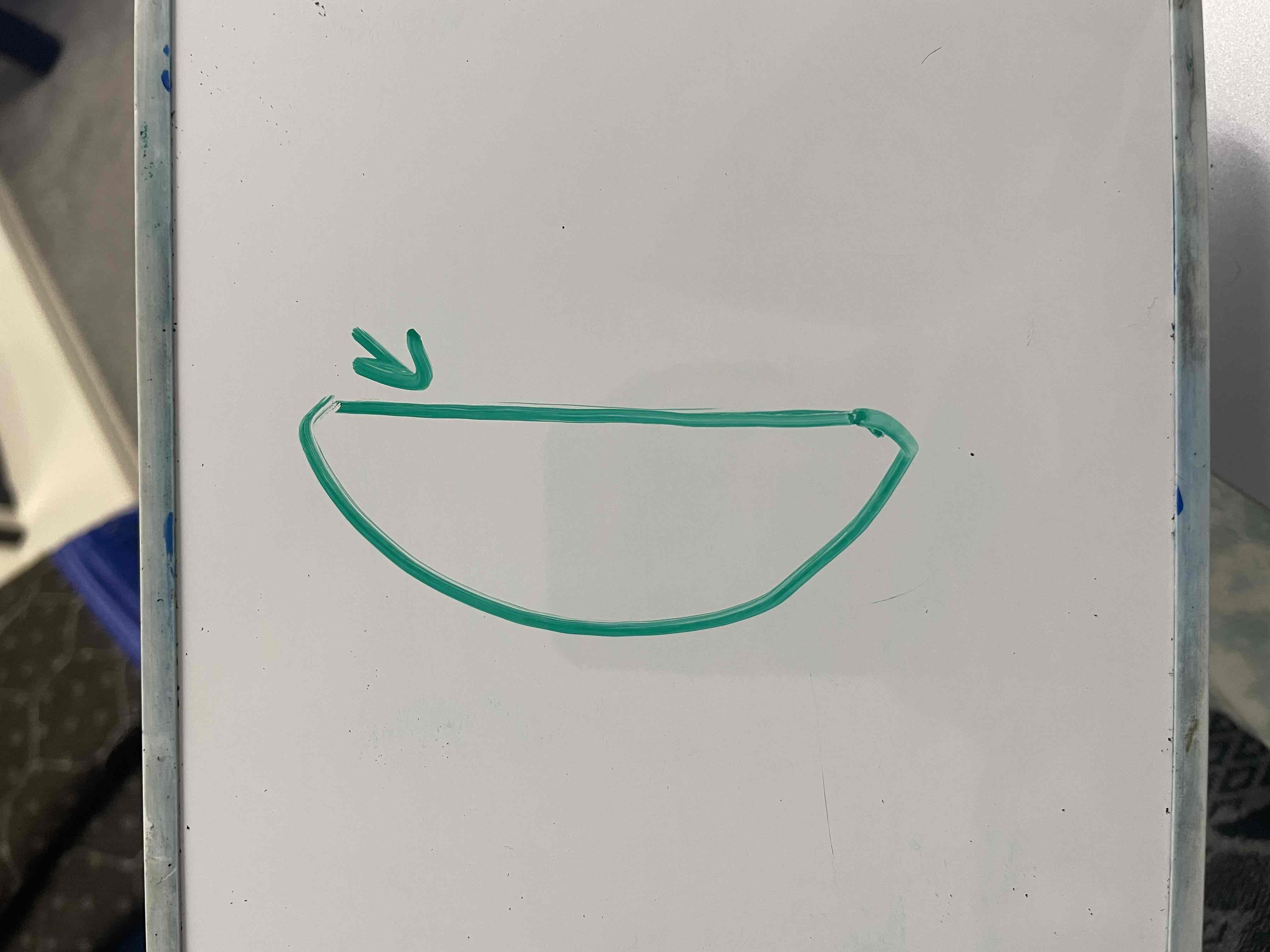
convex meniscus
has 2 curved spherical surfaces - convex on one side and concave on the other
meniscus means crescent shaped
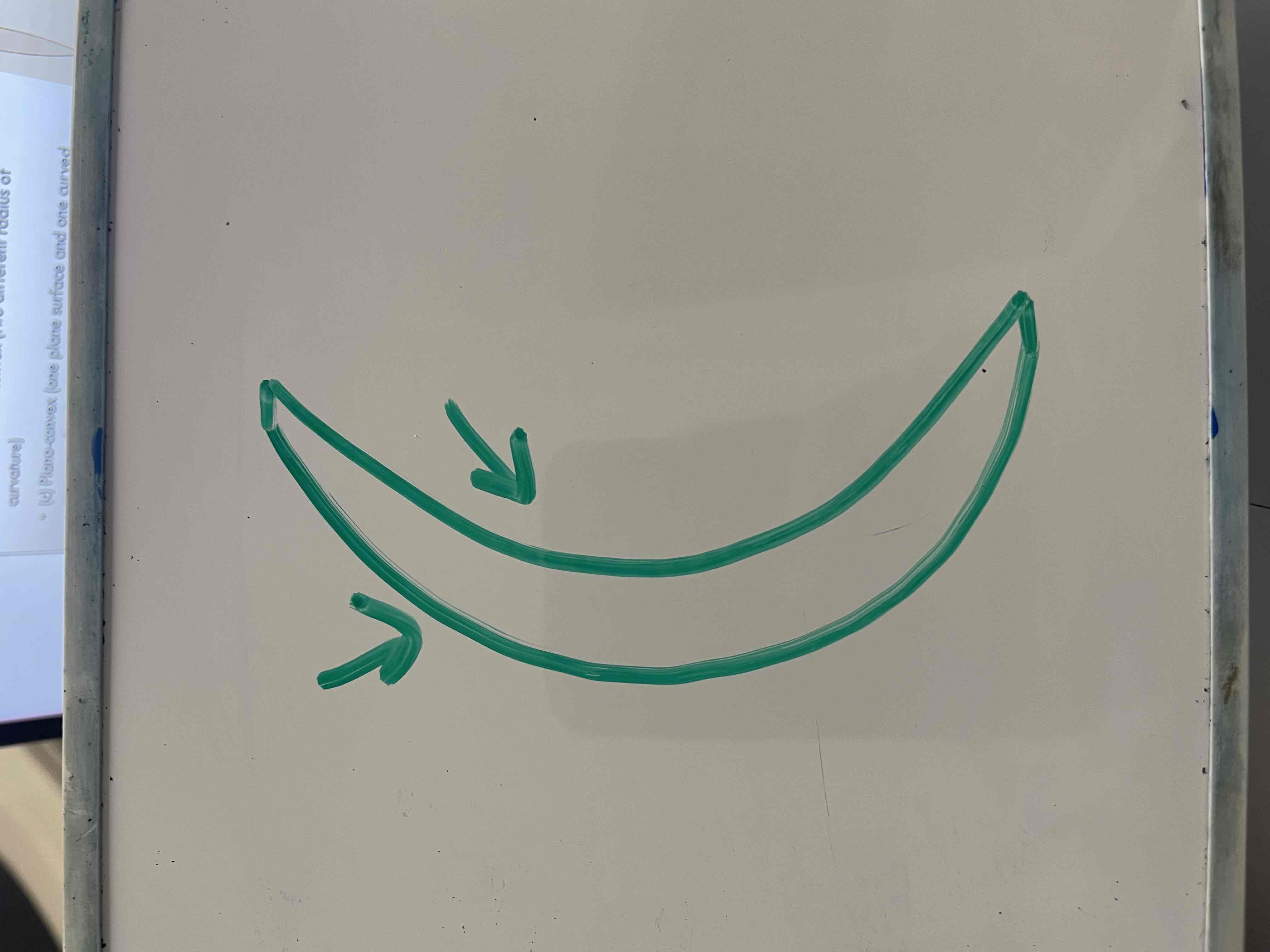
a thin diverging lens can also be described as…
negative lens or concave lens
all thinner at the middle and thicker at the edge
lens forms: diverging lens (4)
1 - equi-concave
2 - double or bi-concave
3 - plano-concave
4 - concave meniscus
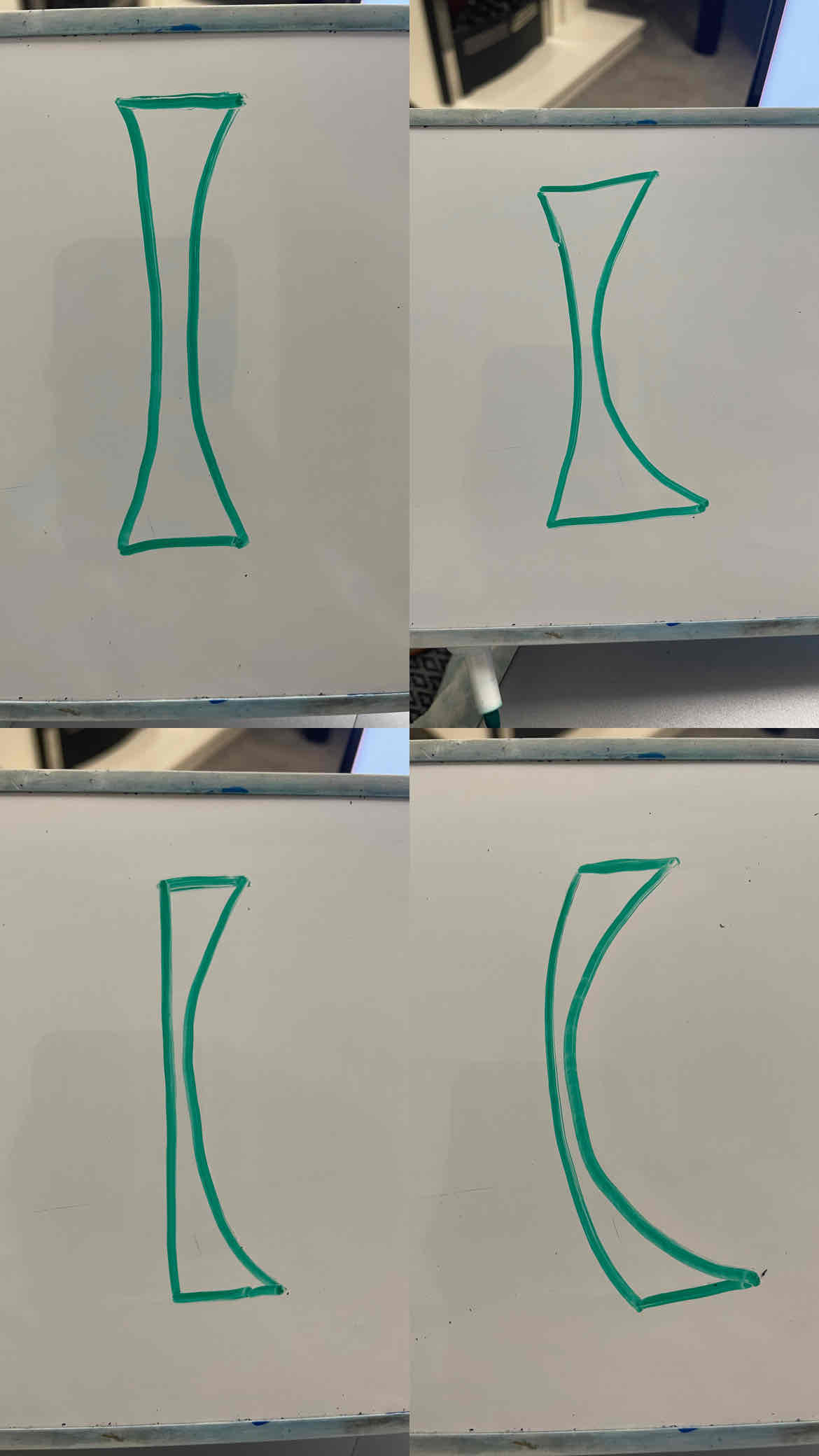
what happens when light hits a convex/converging lens
why do we call a convex lens as a converging lens
there is a parallel beam of light / parallel pencil of rays
ray of light hits the first surface of the lens, then light rays are refracted and hit the second surface and are refracted/bent again
plane wavefronts after refraction from the lens surface are re-shaped into spherical waves and focused to the point on to the right side of the lens
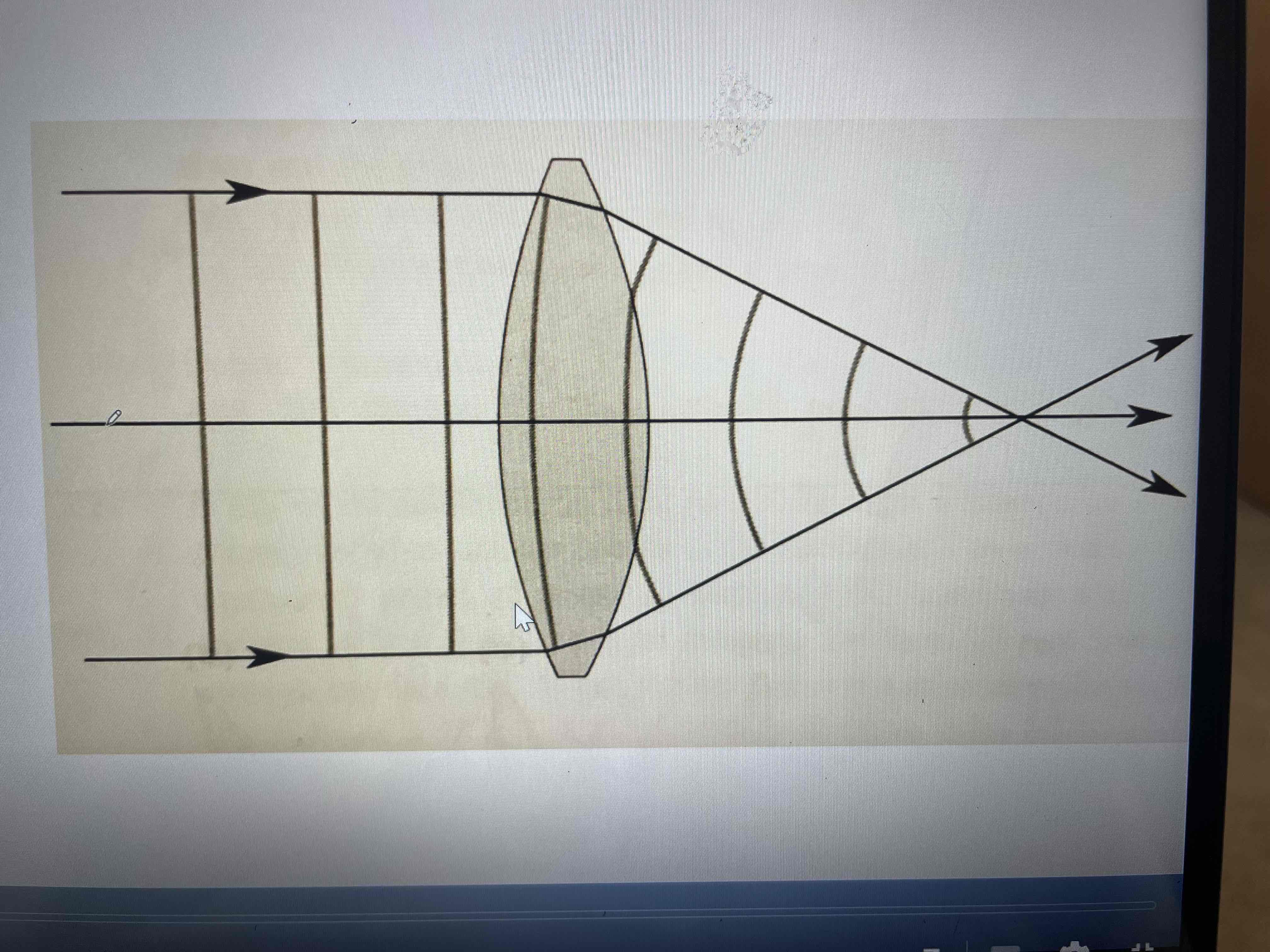
what happens when light hits a concave/diverging lens
why do we call a concave lens as a diverging lens
parallel light rays hit first surface of the lens and gets diverged and then further diverged more
plane wavefronts after refraction from the lens surfaces are re-shaped into spherical waves and gets diverged
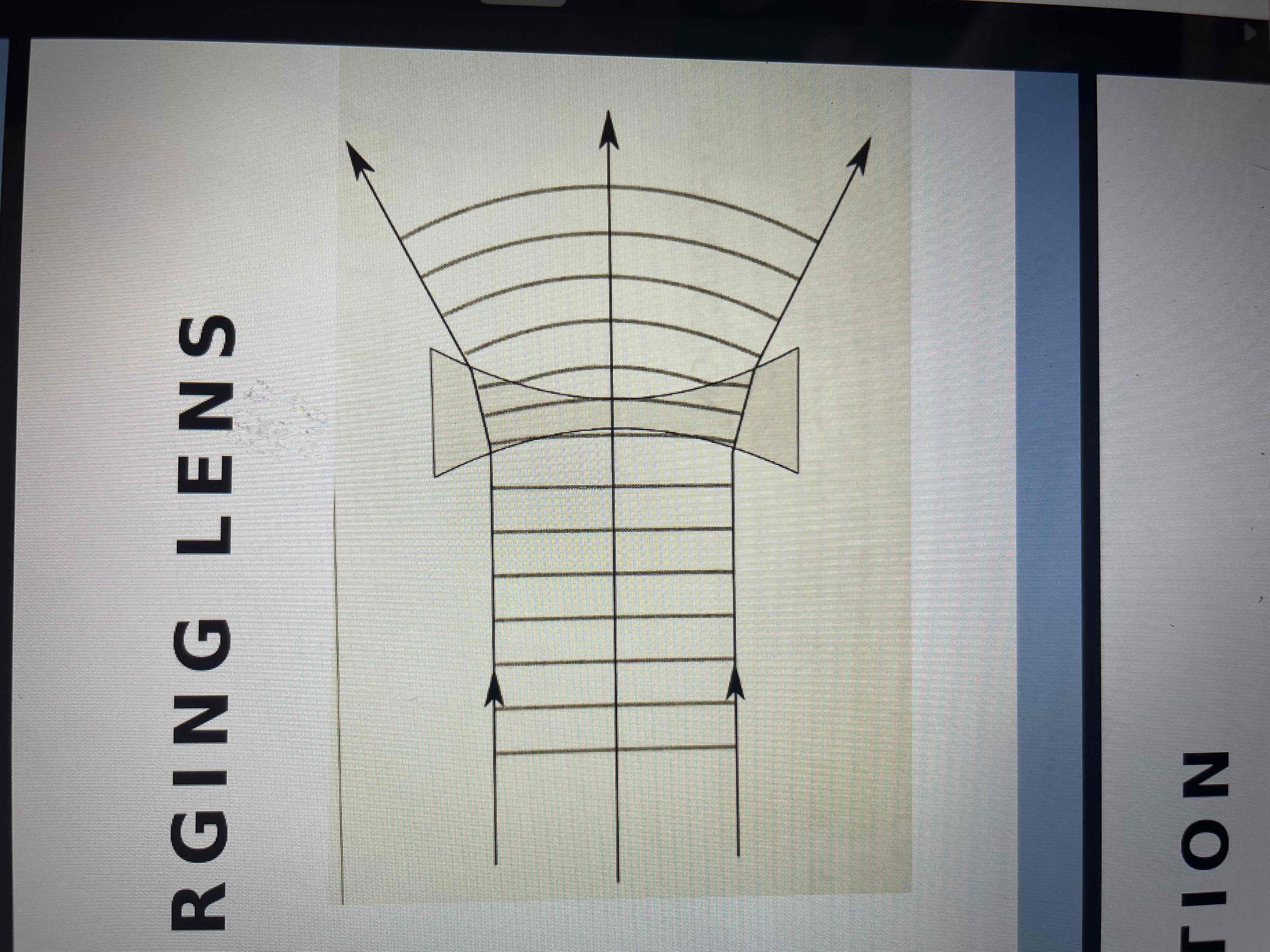
lens specification: what defines the lens
the intersection of the 2 spheres defines the lens
lens specification:
r1 , r2
C1, C2
A1, A2
t
r1 - radius of curvature of the first surface
r2 - radius of curvature of the second surface
C1 - center of curvature of the first surface
C2 - center of curvature of the second surface
A1 - front vertex of the lens
A2 - back vertex of the lens
t (center thickness) - the separation of A1 and A2
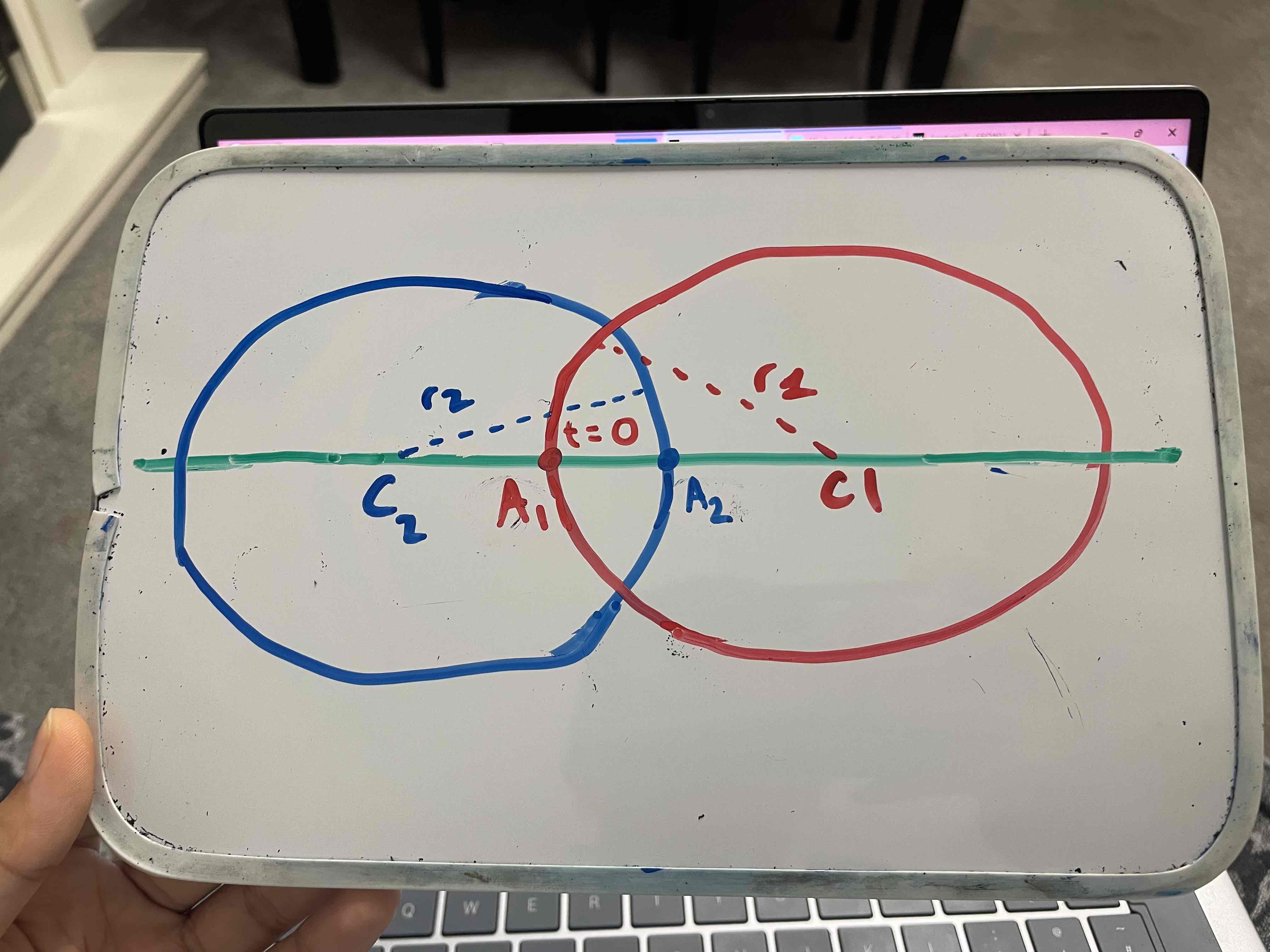
why do we give t the value of 0 in calculations
in thin lenses the (t) value is so minor that we can ignore it - so give it a value of 0
what is the optical axis of the lens
the line joining c1 and c2 – when we have a light ray that enters the lens through the optical axis it goes un-deviated / will not refract and comes out in the same direction
focal lenth of a convex lens :
what is the first principal focus of the lens
represented by F
this is the point on the optical axis from which the light rays diverge and emerge parallel to the axis after refracting by the lens
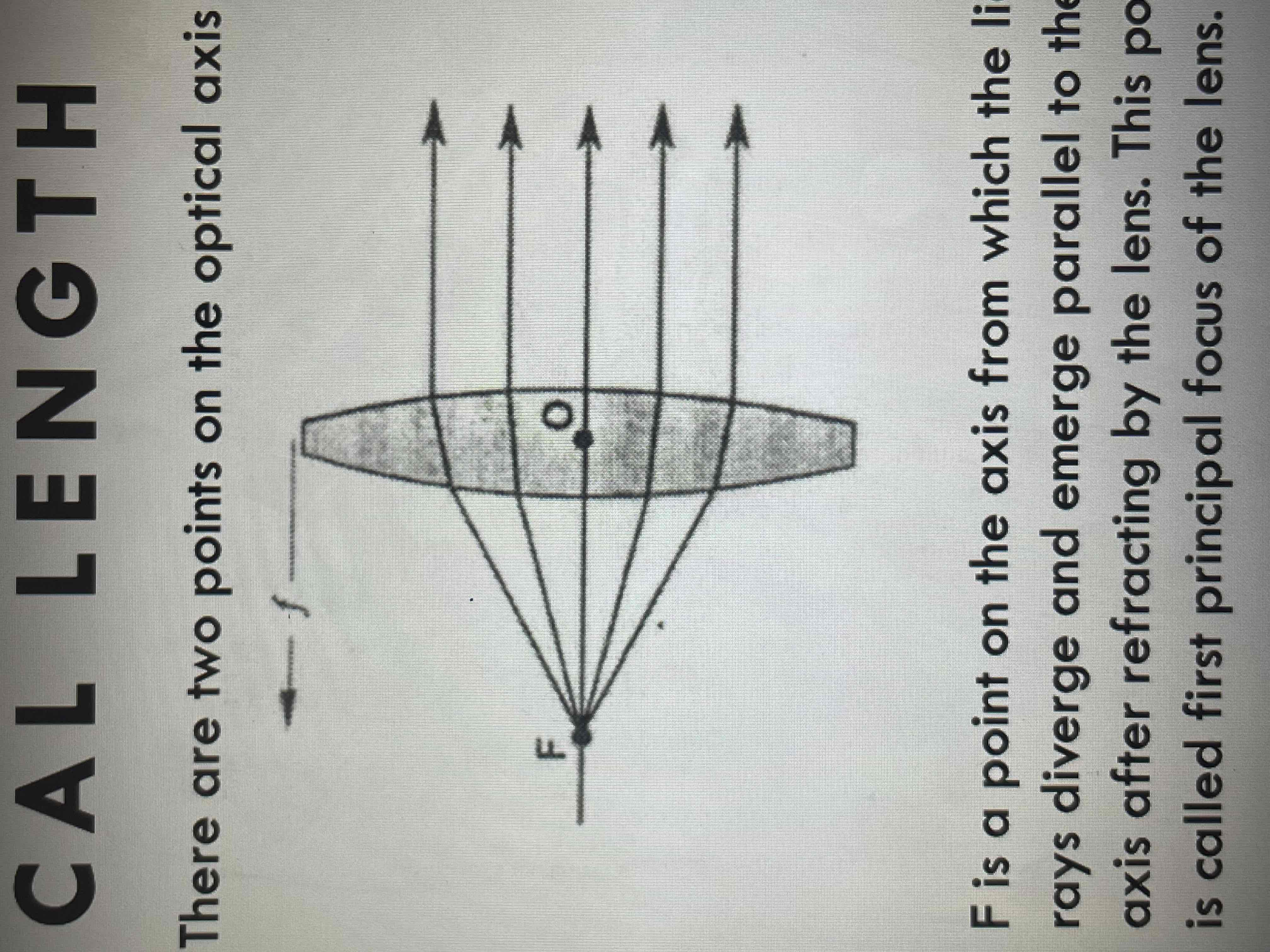
what does f represent ^^
the first focal length of the lens (on the left side)
how do we calculate f (first focal length of the lens)
f = -n / F
n - refractive index of the glass
F - power of the lens (+2.00D)
what is the second principle of focus
represented by F’
when parallel light rays from the infinity converge to a single point
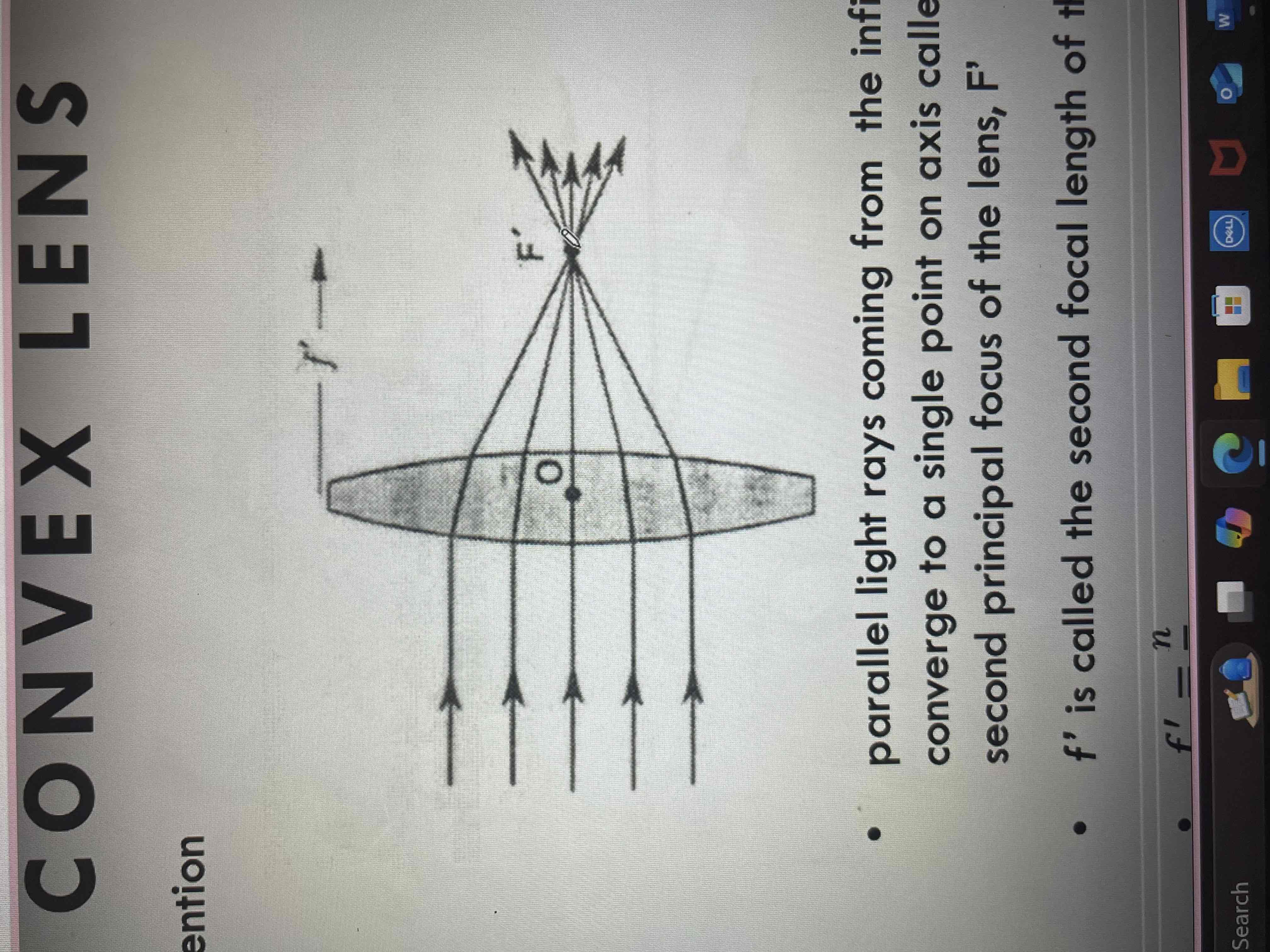
what is f’ and how do we calculate it (in a convex lens)
f’ = second focal length of the lens (on the right side)
f’ = n / f

equation to calculate f and f’ in a concave lens
f = n / F
f’ = -n / F

how does an image form in thin lenses
method: ray tracing
in the ray tracing method how do we represent whether a lens is concave or convex
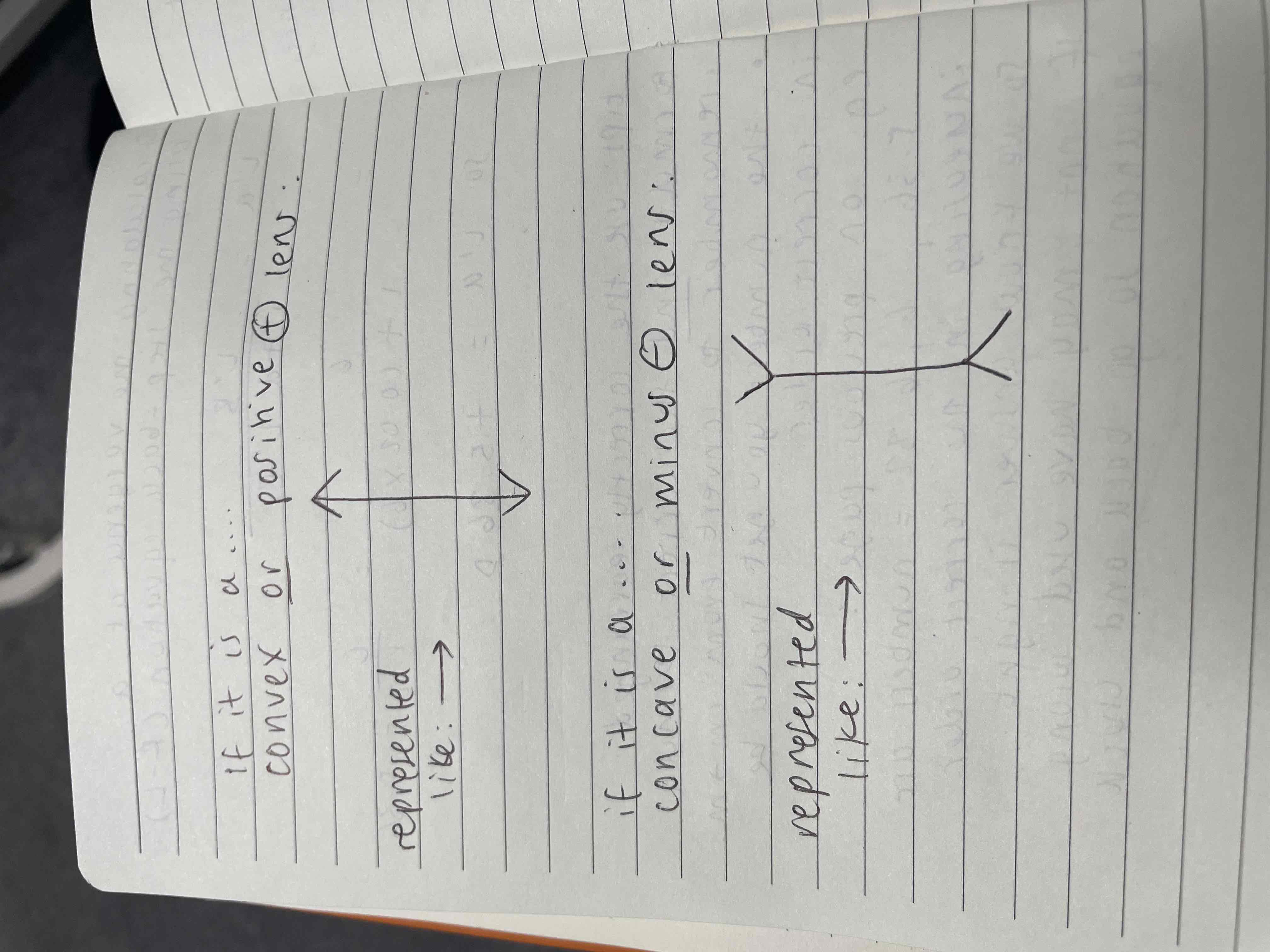
explain the path of light rays in the ray tracing method in the formation of an image (3)
1) ray 1 passes un-deviated through the optical center of the lens (does not undergo refraction)
2) ray 2 travels parallel to the optical axis and after refraction passes through the lens’s secondary focal point (F’) (for a plus lens) (or in case of a minus lens appears to emerge from the secondary focal point)
3) ray 3 passes through the (plus lens) or is headed towards (minus lens) the primary focal point (F) and after refraction is parallel to the optical axis
the point ( I )where all the lines intersect is where the image forms

what is the difference between the optical axis and the optical center?
1) optical axis is an (imaginary) horizontal line that passes through the optical center: extends in both directions, represents the central line along which light rays pass without bending or changing direction
2) optical center is a specific point in the lens typically located at the center of the lens’s curvature: the point where light passes through the lens without being refracted (bent), meaning it travels straight through the lens without any deviation
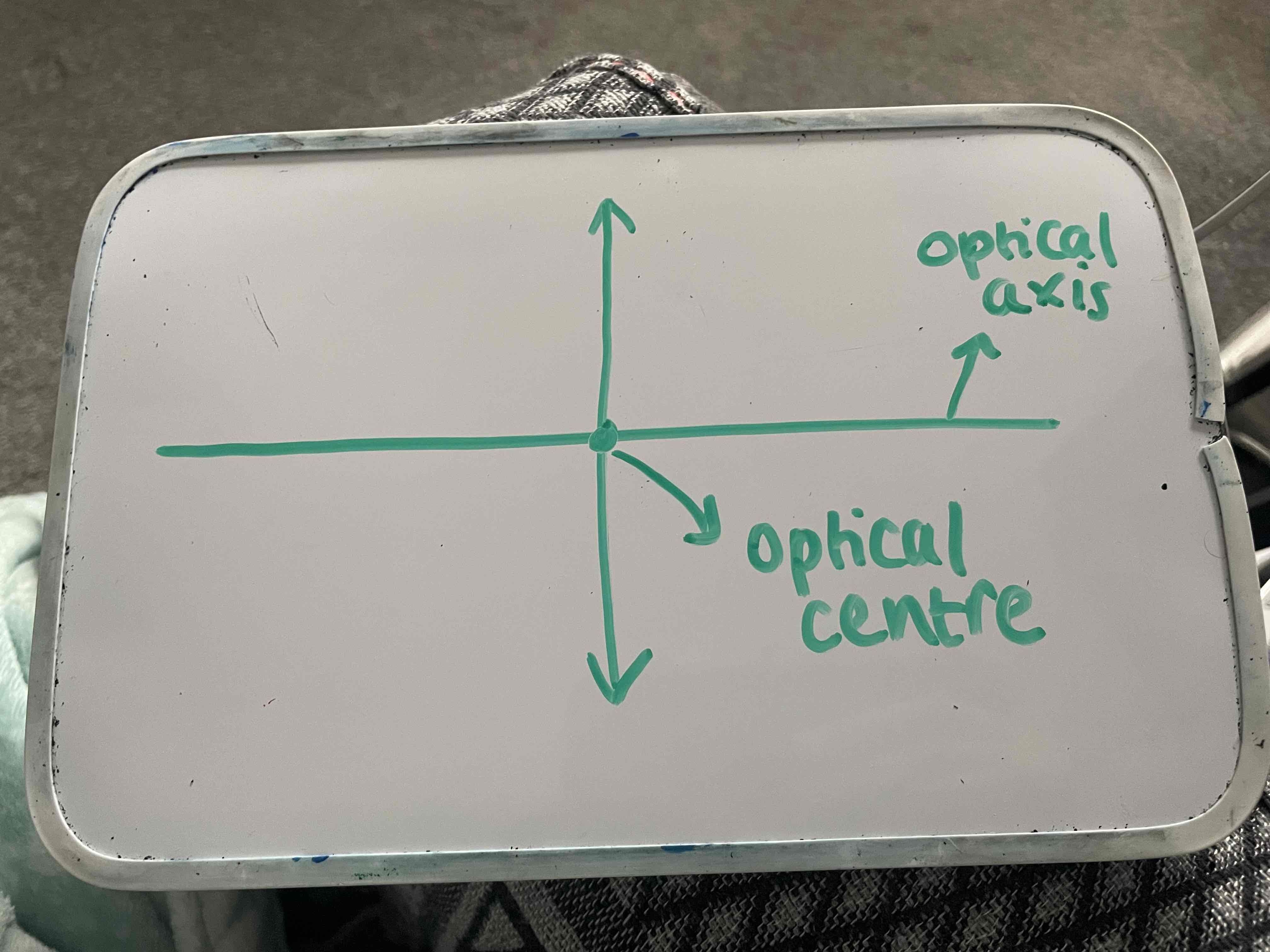
ray tracing: what does the image size and location depend on
depends on the location (distance) of the object from the lens
what is 2f
a point which is twice the distance of the focal length from a lens/mirror
explain the image size and location when the object is at 2f (in a plus lens)
the image is located at the same distance 2f’ and is the same size
image - real and inverted
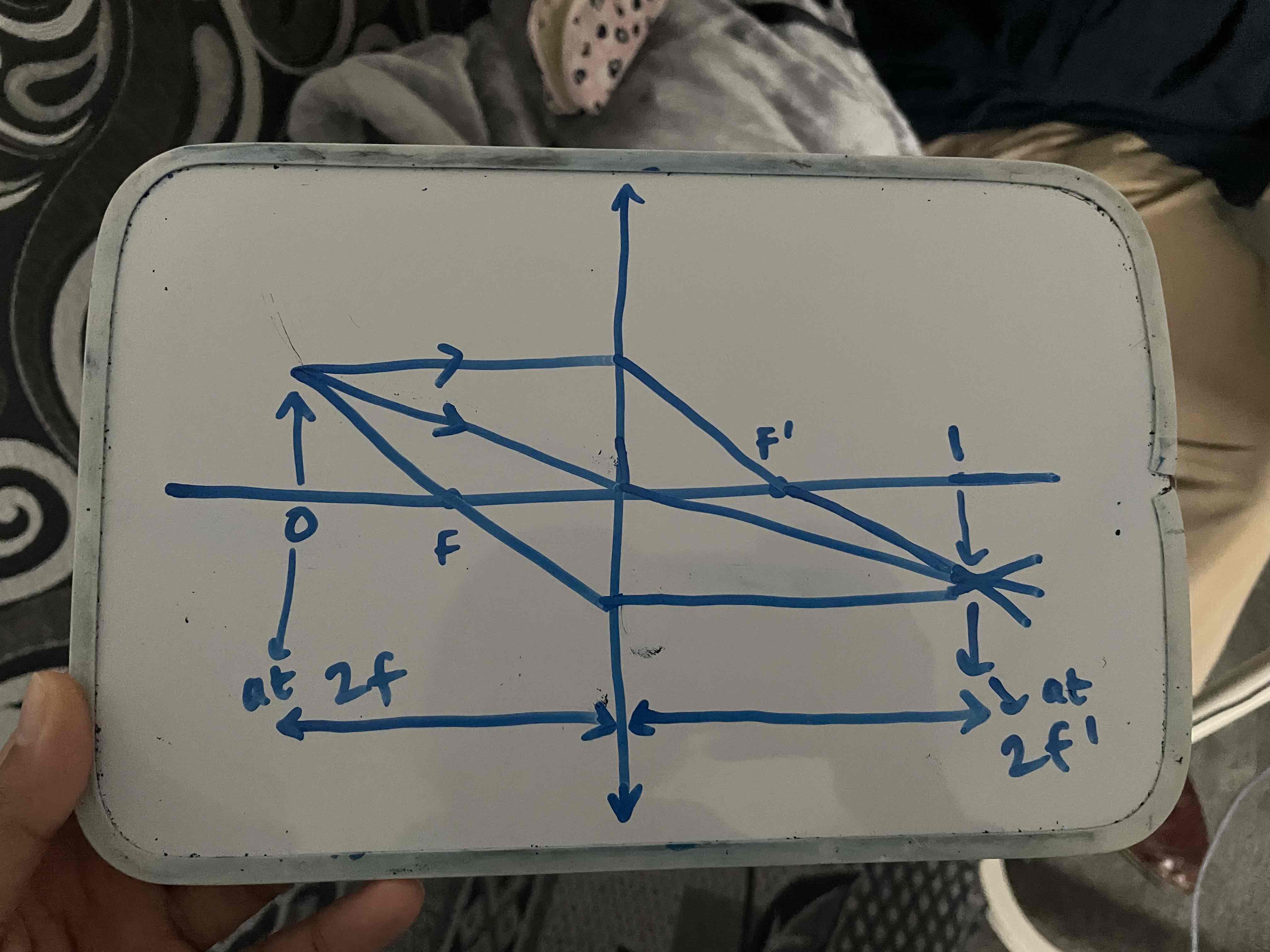
explain the image size and location when the object is further than 2f from the lens (in a plus lens)
the image is minified (smaller than the object)
located: greater than f’ but less than 2f’ from the lens
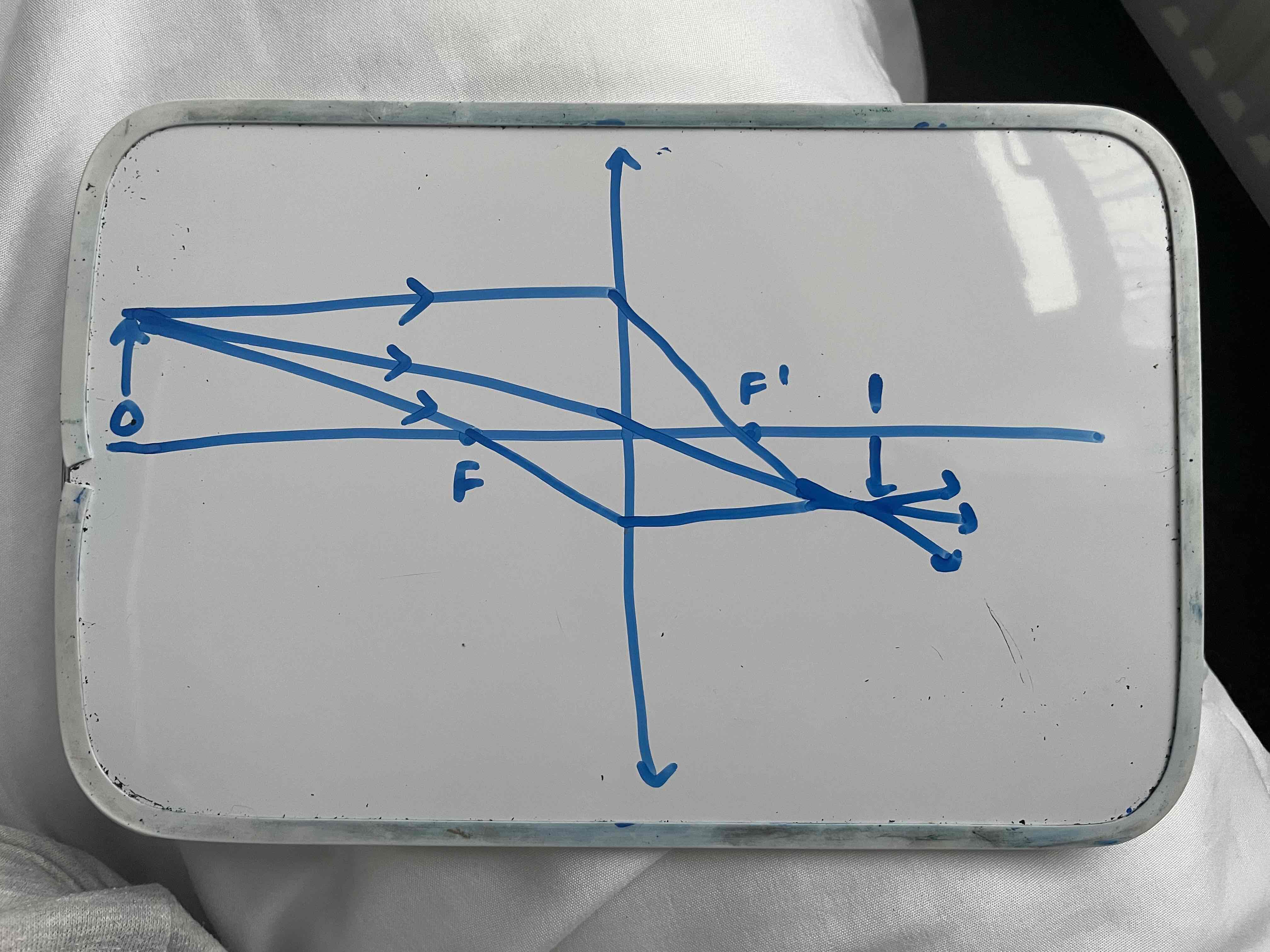
explain the image size and location when the object is greater than F but less than 2f from the lens (in a plus lens)
image is maginified (bigger than the object)
and located greater than 2f’ from the lens

explain the image size and location when the object is closer than the focal point of a PLUS lens
image is formed: virtual, enlarged and upright
location: on the SAME side as the object (left side) and farther than the focal point from the lens
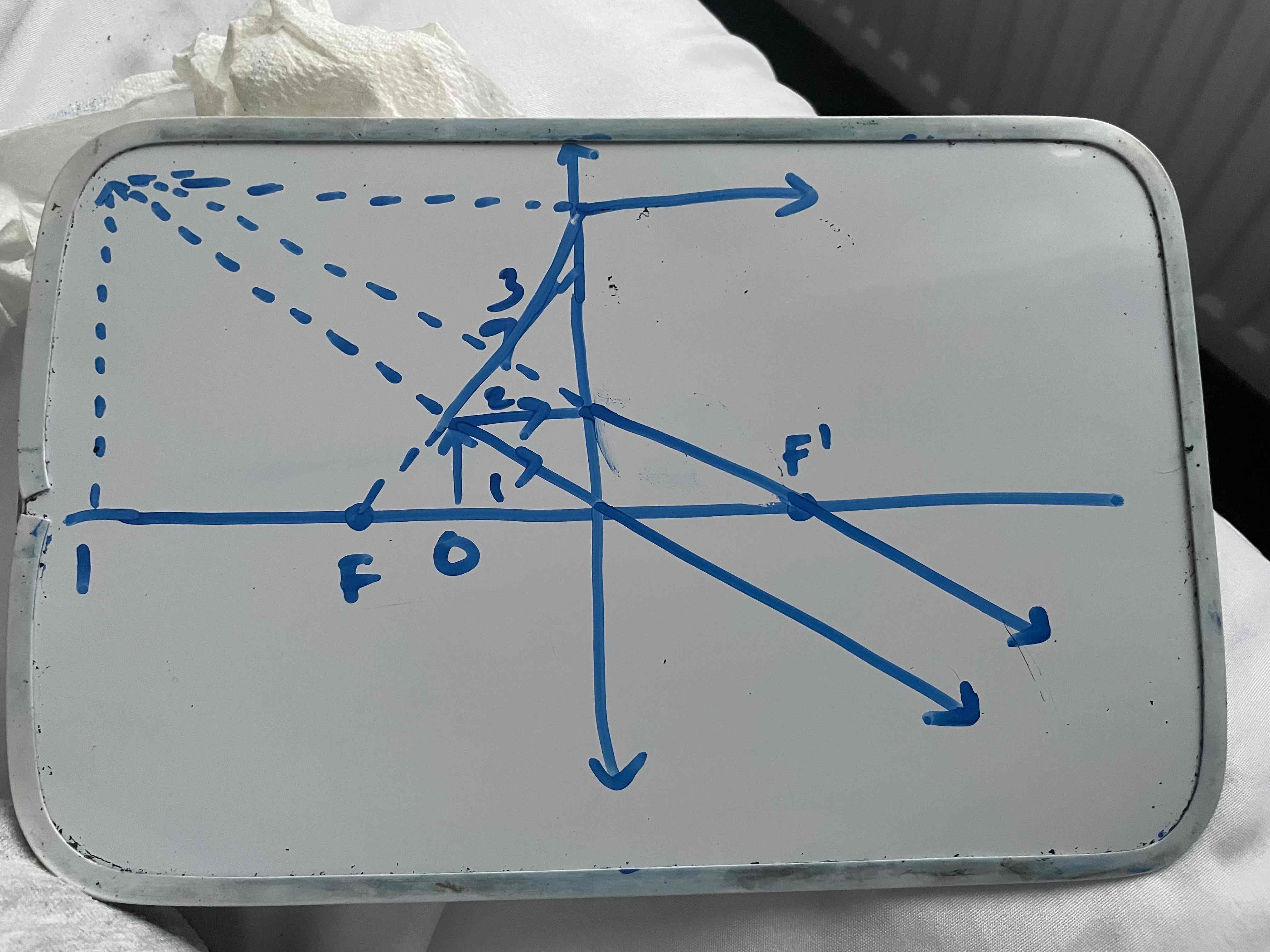
explain the image size and location based on the object location in a diverging/minus lens
always creates a virtual and upright image, closer than the focal point on the SAME side of the lens as the object
as the rays are diverging after refraction, the image is closer to the lens than the object and smaller
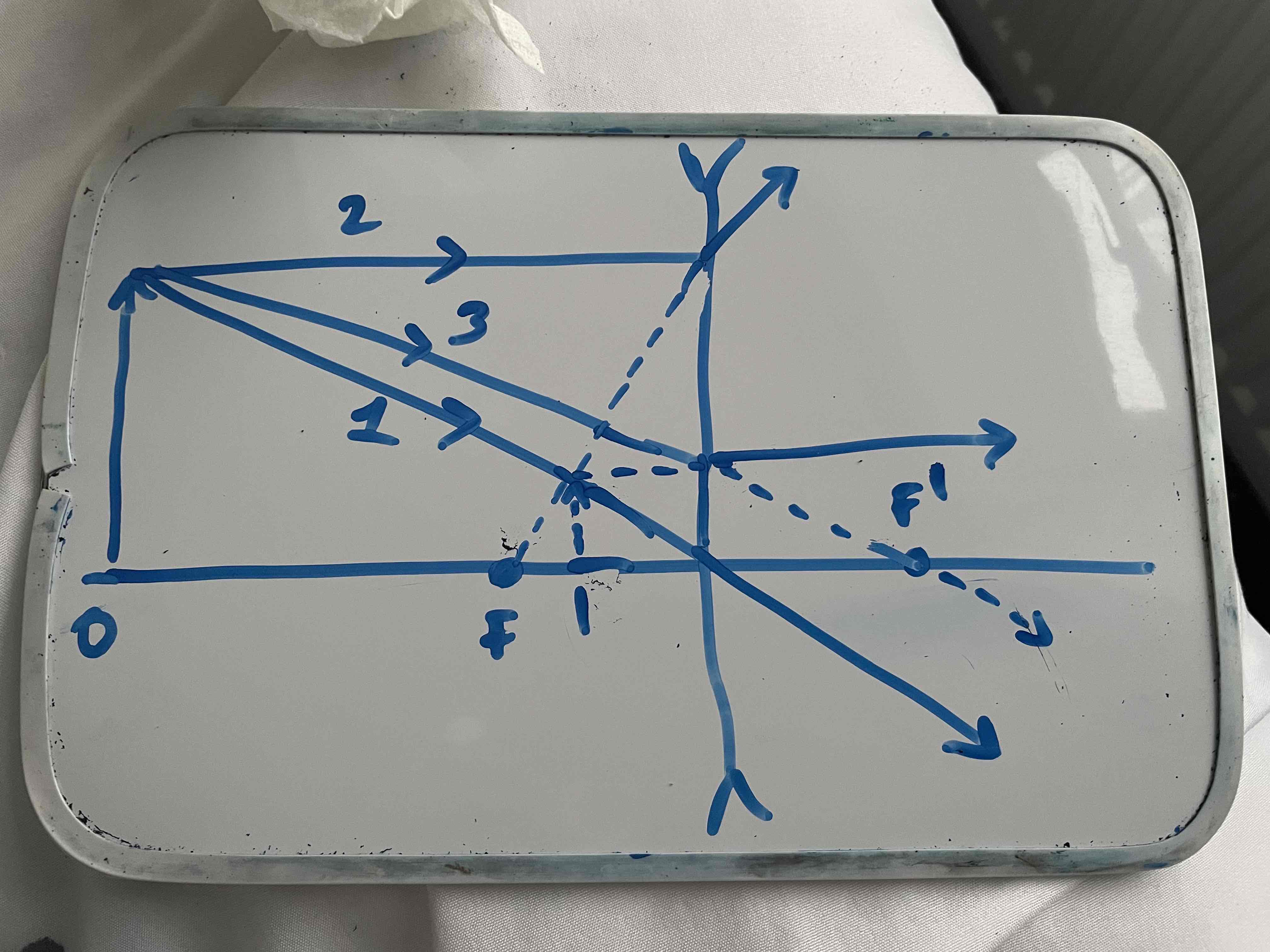
summary of the formation of image in thin lenses and their size and position

things we need to assume when using the lens makers formula
1 - negligible thickness, so vertices coincide (basically that t = 0 )
2 - vergence is unchanged within the lens (light ray enters lens, inside lens it is same direction and then diverges/converges/refracts only after leaving the lens)
3 - first and second focal length are =
4 - when we say ‘focal length’ we are referring to the second length (for a convex lens this is on the RHS, for a concave lens this is on the LHS)
5 - positive focal length - converging
6 - negative focal length - diverging
what is the lens makers formula
to calculate the POWER of a thin lens
F = F1 + F2
or
F = (ng - 1) (1/r-1 - 1/r-2)
ng = refractive index of glass/or material of the lens
r1 / r2 - radius of curvature of surface 1 and 2
define the effectivity of the lens
the power of the lens which when placed at a distance (d) from the position of the original lens, has the same effect on the vergence of the light as the original lens
simple terms: If you move a lens closer or farther from your eye or an object, the way it focuses light and creates images can change
The effectivity measures how strong the lens needs to be at different distances to still focus light properly.
Clinical applications: for example, glasses might need different prescriptions based on how far they sit from your eyes
explain the diagram showing effectivity and all symbols
F - power of the lens
F’ - secondary focal point
d - the (small) distance we have moved the lens by
X - the point where we move the lens
fx’ - the distance once we have moved the lens
FX - power of new lens
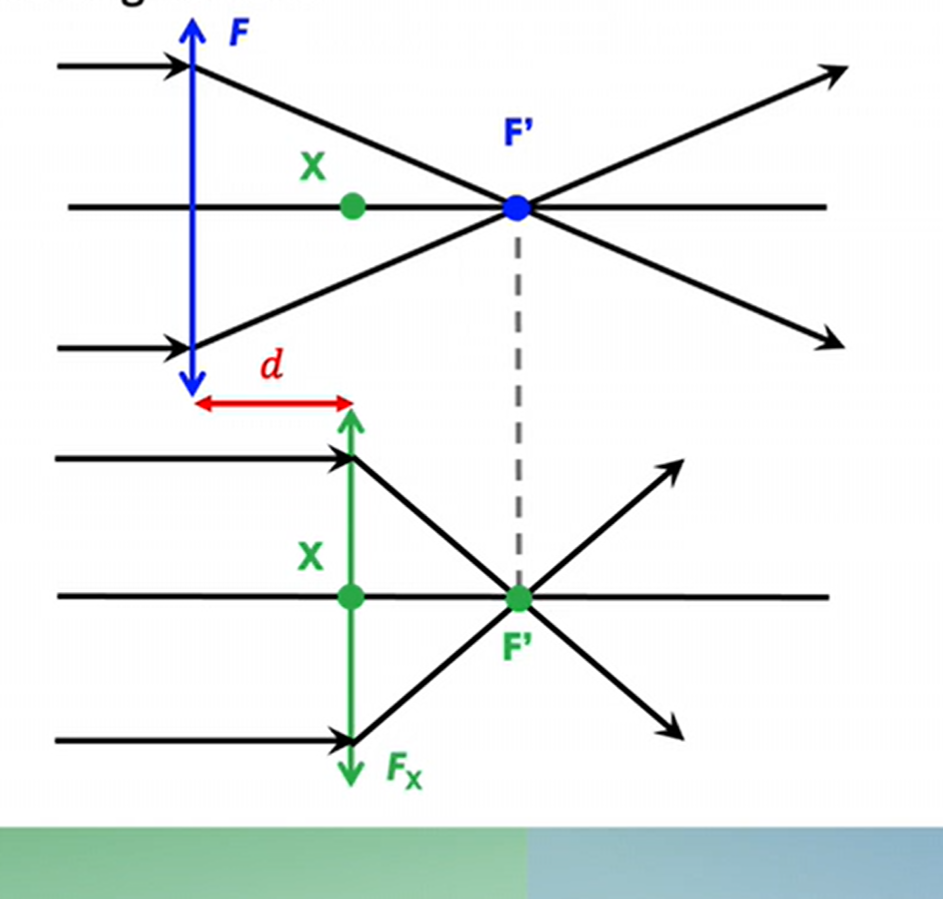
what is the equation to work out the new power of the lens FX - effectivity
FX = 1 / fx’ = 1 / f’ - d = 1 / 1/f-d
what is the step along formula for this equation and when do we use it
FX = F / 1 - dF
when the X is on the right side of the first lens (L-R)
what is the step back equation for this formula and when do we use it
FX = F / 1 + dF
when the X is on the left side of the first lens
(R-L)
what type of refractive error do we use concave and convex lenses to correct
concave - myopia (near sightedness)
convex - hyperopia / hypermetropia ( far sightedness)
what happens to the power of a concave lens if we move more and more towards the right side
moving away from the lens
image will get smaller and appear closer to the lens
BUT the power stays the SAME
what happens to the power of a convex lens if we move more and more towards the right side
power of lens stays the same
image formed will move further away from the lens and could be larger
image size and position changes , but power stays the same